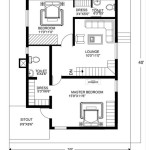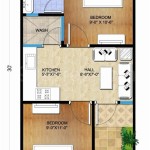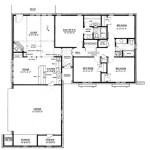Colonial House Plans With Porch: A Timeless Architectural Blend
Colonial house plans, renowned for their symmetry, formality, and historical significance, have remained a popular choice for homeowners seeking a classic and elegant aesthetic. The addition of a porch to a colonial design not only enhances the architectural charm but also provides functional outdoor living space, seamlessly blending indoor and outdoor realms. This article will explore the defining characteristics of colonial house plans with porches, examining the different types, key design elements, and considerations for modern interpretations.
Colonial architecture in the United States developed gradually, evolving from the building traditions brought by European settlers. The styles were influenced by the existing architectural trends in their respective homelands, thus creating regional variations that are still observable today. The earliest colonial homes were practical structures built to withstand the rigors of a new environment, but as settlements prospered, architectural elegance became increasingly important. The addition of porches became a natural extension, reflecting a desire for social interaction and a connection with the landscape.
Distinguishing Features of Colonial Architecture
Understanding the foundational elements of colonial architecture is essential for appreciating colonial house plans with porches. Several characteristics define this style, contributing to its enduring appeal.
Symmetry is a cornerstone of colonial design. This is evident in the balanced facade, with windows and doors arranged in a symmetrical pattern around a central entrance. This emphasis on balance extends to the interior layout as well, with rooms often mirroring each other on either side of a central hallway.
Formality is another defining trait. Colonial homes often project a sense of stateliness and order. This formality is reflected in the use of classical architectural details, such as columns, pilasters, and pediments. The careful attention to detail and the use of refined materials contribute to the overall sense of elegance.
Rectangular shapes are prevalent in colonial house plans. This simplicity of form contributes to the overall sense of balance and order. The rectangular footprint allows for efficient use of space and facilitates the symmetrical arrangement of interior elements.
The use of traditional materials, such as wood, brick, and stone, is common in colonial architecture. These materials contribute to the authenticity and historical character of the style. The choice of materials often reflects the local resources available in the region where the home is built.
Steeply pitched roofs are characteristic of many colonial homes. This roof design helps to shed snow and rain, which is particularly important in regions with harsh climates. The pitched roof also adds to the visual interest of the home's exterior.
Multi-pane windows are a common feature, adding to the visual complexity and historical accuracy of the design. These windows often have shutters, which serve both a functional and aesthetic purpose.
Variations of Colonial House Plans Styles
Within the broader category of colonial architecture, several distinct sub-styles exist, each with its own unique characteristics and influences. The presence of a porch can further enhance the distinct features of each style.
New England Colonial: This style is characterized by its simplicity and practicality, reflecting the Puritan values of the early settlers. New England colonial homes often have a central chimney, a simple rectangular shape, and minimal ornamentation. The addition of a small, covered porch can provide shelter from the elements and enhance the home's welcoming appeal.
Georgian Colonial: The Georgian style, influenced by British architecture of the 18th century, is characterized by its symmetry, formality, and classical details. Georgian colonial homes often feature a grand entrance with a decorative pediment, symmetrical window placement, and a hipped roof. A porch in the Georgian style would typically be formal and symmetrical, featuring columns and a classical entablature.
Federal Colonial: Building on the Georgian style, Federal architecture incorporates more intricate details and ornamentation. Federal colonial homes often feature elliptical fanlights over the entrance, delicate moldings, and decorative swags and garlands. A porch in the Federal style might include ornate iron railings and decorative columns.
Dutch Colonial: This style is distinguished by its gambrel roof, which gives the roof a distinctive curved shape. Dutch colonial homes often have wide dormers and a generous porch. The porch in this style is often expansive, providing ample space for outdoor living and enjoyment of the surroundings.
Spanish Colonial: Found primarily in the southwestern United States, Spanish Colonial architecture is characterized by its stucco walls, red tile roofs, and arched openings. Spanish colonial homes often feature courtyards and verandas, which provide shade and ventilation. A porch in this style would typically be covered and feature arched columns and decorative tile work.
Integrating Porches into Colonial House Plans
The addition of a porch to a colonial house plan can significantly enhance its functionality and aesthetic appeal. Careful consideration should be given to the design and placement of the porch to ensure that it complements the overall architectural style and meets the needs of the homeowners.
The size and orientation of the porch should be determined based on the climate and the intended use. A larger porch may be desirable in warm climates to provide ample shade and outdoor living space. The orientation of the porch should take into account the sun's path to maximize shade in the summer and sunlight in the winter.
The architectural style of the porch should be consistent with the overall style of the house. For example, a Georgian colonial home would benefit from a formal porch with columns and a classical entablature, while a Dutch colonial home might feature a wider, more informal porch with simple railings.
The materials used for the porch should complement the materials used for the house. Wood, brick, and stone are all common materials for colonial porches. The choice of materials should be based on the desired aesthetic and the local climate.
Consider the addition of architectural details to enhance the porch's appearance. These details could include columns, railings, cornices, and decorative moldings. The details should be chosen carefully to complement the overall style of the house.
Porches of colonial builds can be screened in to provide protection from insects. This is particularly important in regions with abundant mosquito or fly populations. A screened porch can also provide a more private outdoor living space.
Think about incorporating outdoor lighting to extend the use of the porch into the evening. Lighting can also enhance the porch's appearance and safety. Consider using a combination of ambient, task, and accent lighting to create a visually appealing and functional space.
The area can be thoughtfully furnished with comfortable seating, tables, and other outdoor furniture to create a welcoming and functional outdoor living space. The furniture should be chosen to complement the style of the house and the porch.
Landscaping can be used to integrate the porch into the surrounding landscape. Plants, trees, and shrubs can be used to create a sense of privacy and to enhance the porch's appeal. Consider using flowering plants to add color and fragrance to the outdoor space.
Colonial porches can seamlessly integrate with modern amenities. Homeowners now incorporate outlets for electronics, ceiling fans for added comfort, and even outdoor kitchens to maximize enjoyment of their outdoor space. Balancing these modern conveniences with the colonial aesthetic requires careful consideration and planning. Modern elements should be integrated discreetly to avoid detracting from the home's historical charm.
Integrating porches into colonial builds requires thoughtful consideration of the architectural style, site conditions, and the needs of the homeowners. When done well, a colonial house plan with a porch can create a beautiful, functional, and inviting home.

Colonial House Plan 4 Bedrms 3 5 Baths 3240 Sq Ft 119 1168
Colonial Country Home With 5 Bdrms 2658 Sq Ft Floor Plan 105 1068

Plan 81263w Sweeping Raised Porches Colonial House Plans Country Style

William A Radford 1908 House Plans Dutch Colonial Revival Barn Style Homes

1200 Sq Ft Country Home Plan With Front Porch 3 Bed 2 Bath

Colonial Style House Plan 4 Beds 2 5 Baths 2148 Sq Ft 1010 152 Houseplans Com

Colonial House Plans Southern Floor

Plan 75169 2 Story Farmhouse With Game Room

4 Bedroom 3 Bath Colonial House Plan Alp 09jf Houseplan Com

Colonial House Plans Floor For Homes








